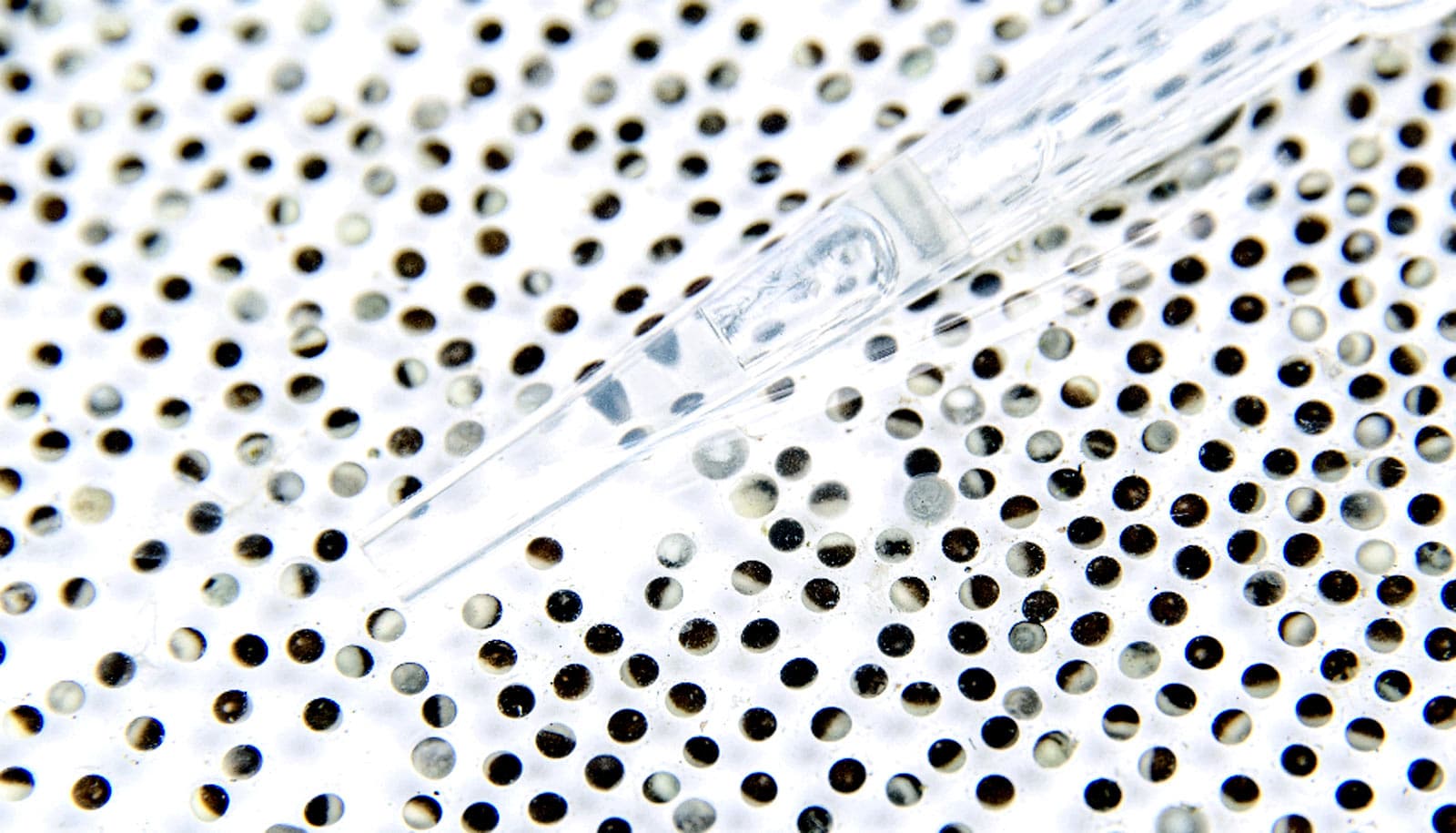
(Credit: Getty Images )
Fused mitochondria let dividing cells better use O2
Mitochondria join together to help cells to multiply in unexpected ways, finds research with potential relevance to cancer.

When cells divide rapidly, their mitochondria are fused together, research finds.
In this configuration, the cell can more efficiently use oxygen for energy. Fused mitochondria also churn out a biochemical byproduct, aspartate, that is key to cell division.
This work from the lab of Gary Patti, associate professor of chemistry at Washington University in St. Louis, illuminates the inner workings of dividing cells and shows how mitochondria combine to help cells to multiply in unexpected ways. The findings appear in the journal eLife.
Given that cancer cells are known for dividing at a runaway pace, the new findings may have implications for cancer diagnosis and treatment.
“Most studies of proliferating cells are conducted in the context of cancer, where scientists are comparing a cancer tissue that’s rapidly growing with normal tissue that surrounds the tumor or a normal tissue from a different patient,” says Conghui Yao, a PhD candidate in Patti’s lab and first author of the study. “These kinds of comparisons are physiologically relevant but have some disadvantages.
“A tumor is a very complicated thing, not only because it is made up of different kinds of cells, but also because the environment of a tumor is different from that of healthy tissue,” she adds.
For example, a tumor needs nutrients to grow, but it doesn’t have the blood vessel infrastructure that typically supplies other healthy tissues in the body. As a result, tumors are often starved for oxygen.
But even in the presence of abundant oxygen, cancer cells get energy through a relatively inefficient fermentation process. Instead of using oxygen to burn glucose in their mitochondria to get their juice, cancer cells use an “aerobic glycolysis” process that turns their glucose into lactate. This process is called the Warburg effect.
Although scientists have observed the phenomenon in rapidly dividing cells for more than 90 years, they still don’t fully understand it. The earliest of explanations suggested that mitochondria in cancer cells are damaged in a way that prevents them from producing energy normally.
Yao was familiar with the Warburg effect and its implications. So when she set up an experimental system that allowed her to turn cell division on and off, she was surprised to see that her dividing cells were consuming a lot of oxygen.
“Much of the literature had suggested that dividing cells would do the opposite,” Yao says. “So we looked into not only why our dividing cells were consuming more oxygen, but also how they were able to consume more oxygen.”
Dividing or not
Part of the beauty of Yao’s initial experiment was its simplicity: She was able to measure metabolism in one specific type of cell under two distinct conditions—when the cell was dividing and when it was not dividing. That’s also how she was able to home in on the particular structural change to mitochondria that was driving the efficiencies she observed.
“The dividing cells had the same amount of mitochondria per protein or per mass, compared to non-dividing cells,” says Patti, whose research focuses on the biochemical reactions that underlie metabolism. “But we did notice when we imaged mitochondria in these dividing cells that they are significantly longer.”
Longer because some adjacent mitochondria had fused into one—making multiple, adjoined mitochondria into bigger, more efficient, energy-generating machines.
The other notable thing that “mega-mitochondria” are particularly good at creating, Yao discovered, is a molecule called aspartate that is essential for cells to replicate.
“Recent work from other labs has taught us that one of the most important reasons that dividing cells need to consume oxygen is to make aspartate. So it made sense to us that mitochondrial fusion in dividing cells would increase aspartate production,” Yao says.
Cancer vulnerability?
Yao and Patti are not the first to observe mitochondrial fusion. But they are among the first to interrogate mitochondrial fusion with sophisticated metabolomic technologies, enabling a molecular-level understanding of the process as it relates to cell division. The biochemical alterations they observed may represent processes that can be targeted in malignant cancer cells.
“It is often stated that rapidly dividing cancer cells increase fermentation at the expense of decreasing oxygen consumption for mitochondrial activity,” Patti says. “Our results suggest that at least some rapidly dividing cells increase both processes under normal oxygenated conditions.
“Since utilization of nutrients by rapidly dividing cancer cells is the basis for various drugs and diagnostic tests, these findings may have important clinical significance and may represent a metabolic vulnerability in cancer,” Patti adds.
Funding for the work comes from the National Institutes of Health; the Pew Charitable Trusts; and the Edward Mallinckrodt, Jr. Foundation.
Source: Washington University in St. Louis
The post Fused mitochondria let dividing cells better use O2 appeared first on Futurity.
Share this article:
This article uses material from the Futurity article, and is licenced under a CC BY-SA 4.0 International License. Images, videos and audio are available under their respective licenses.


